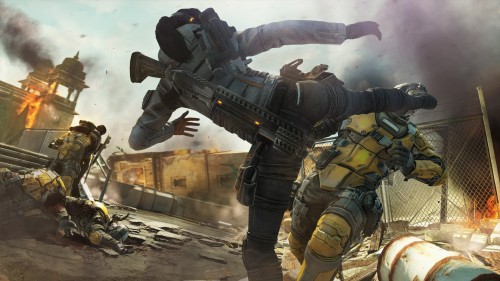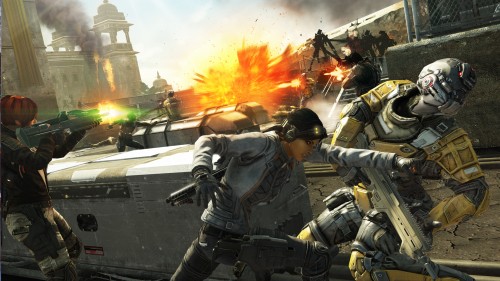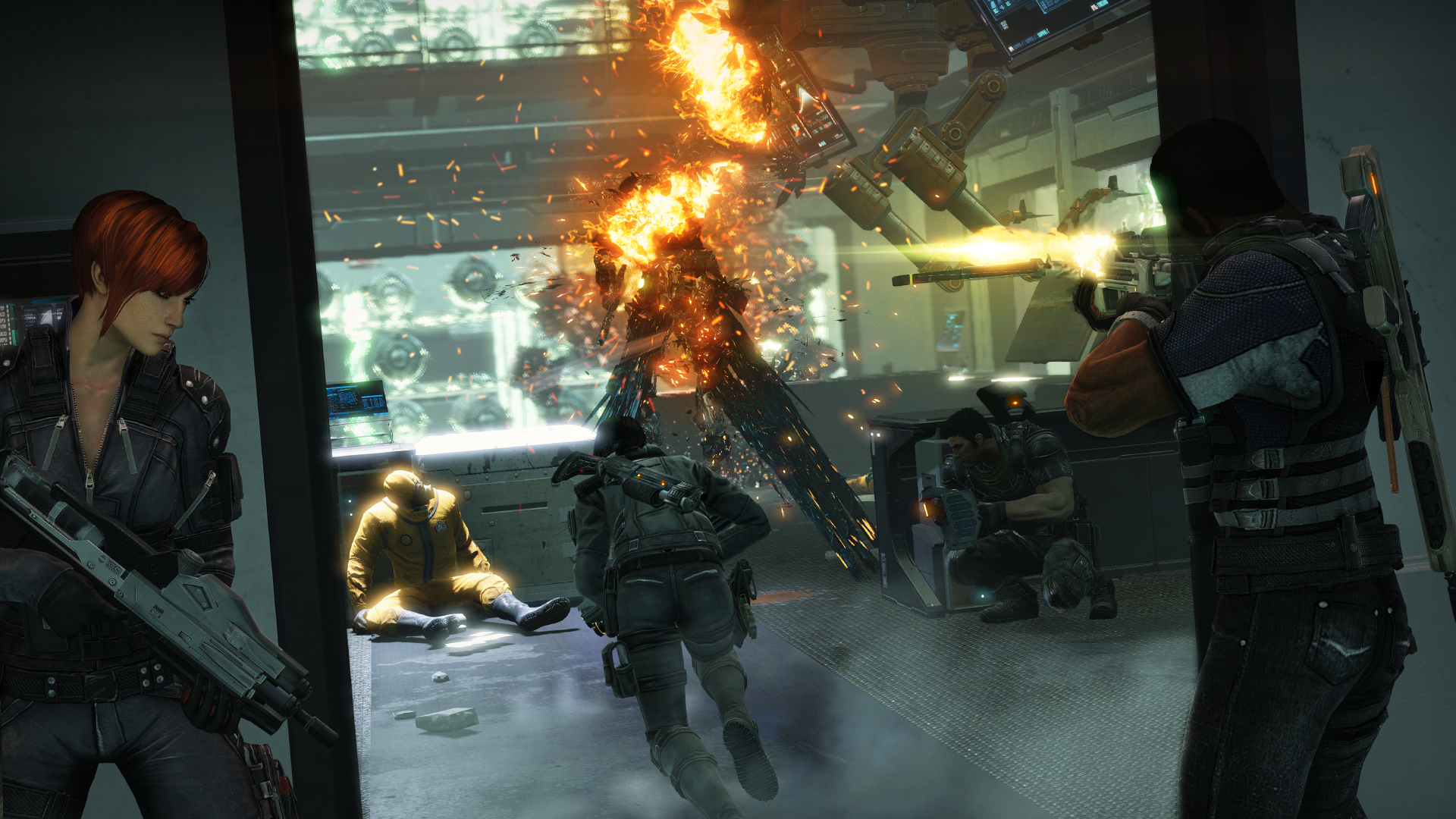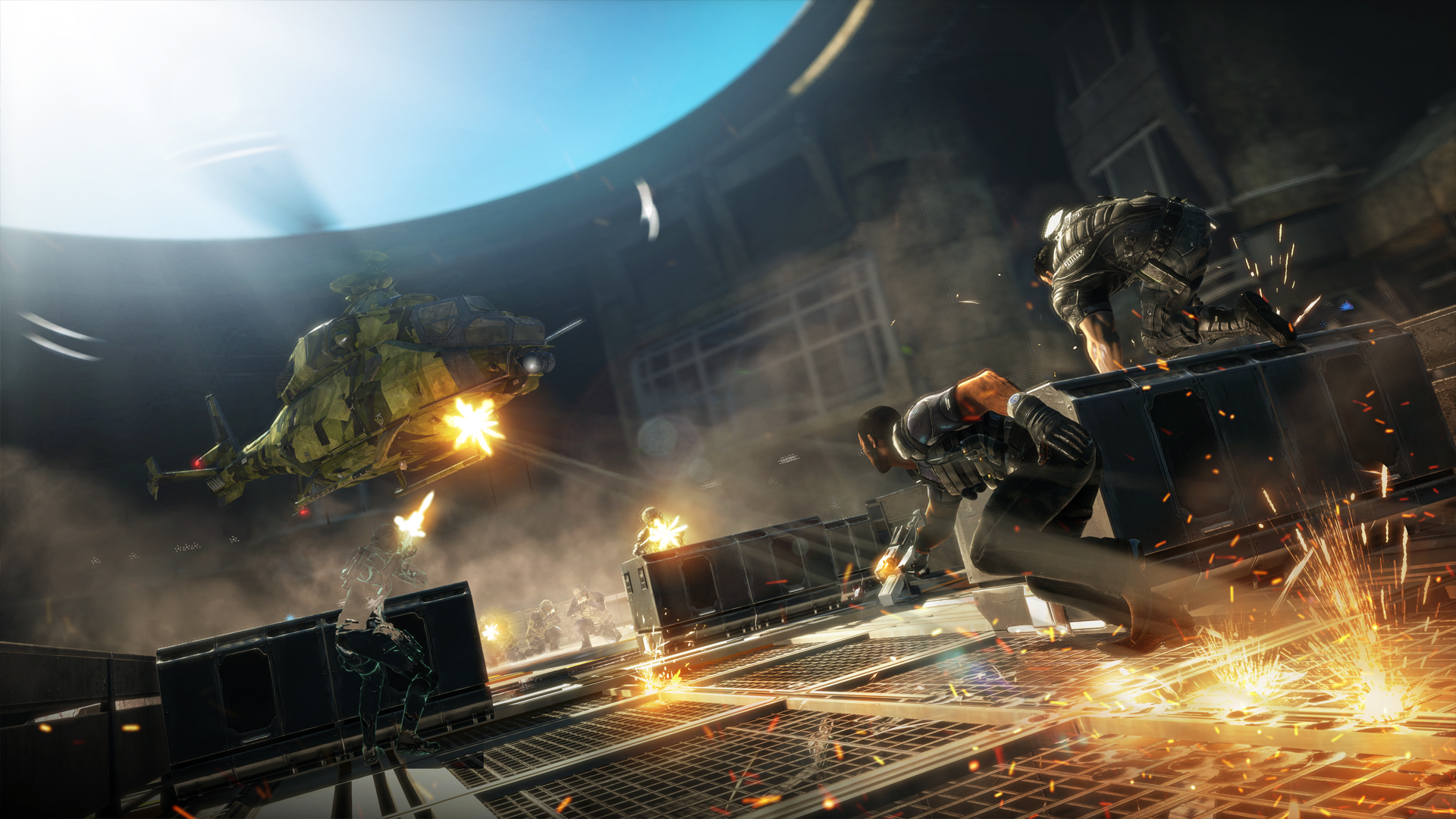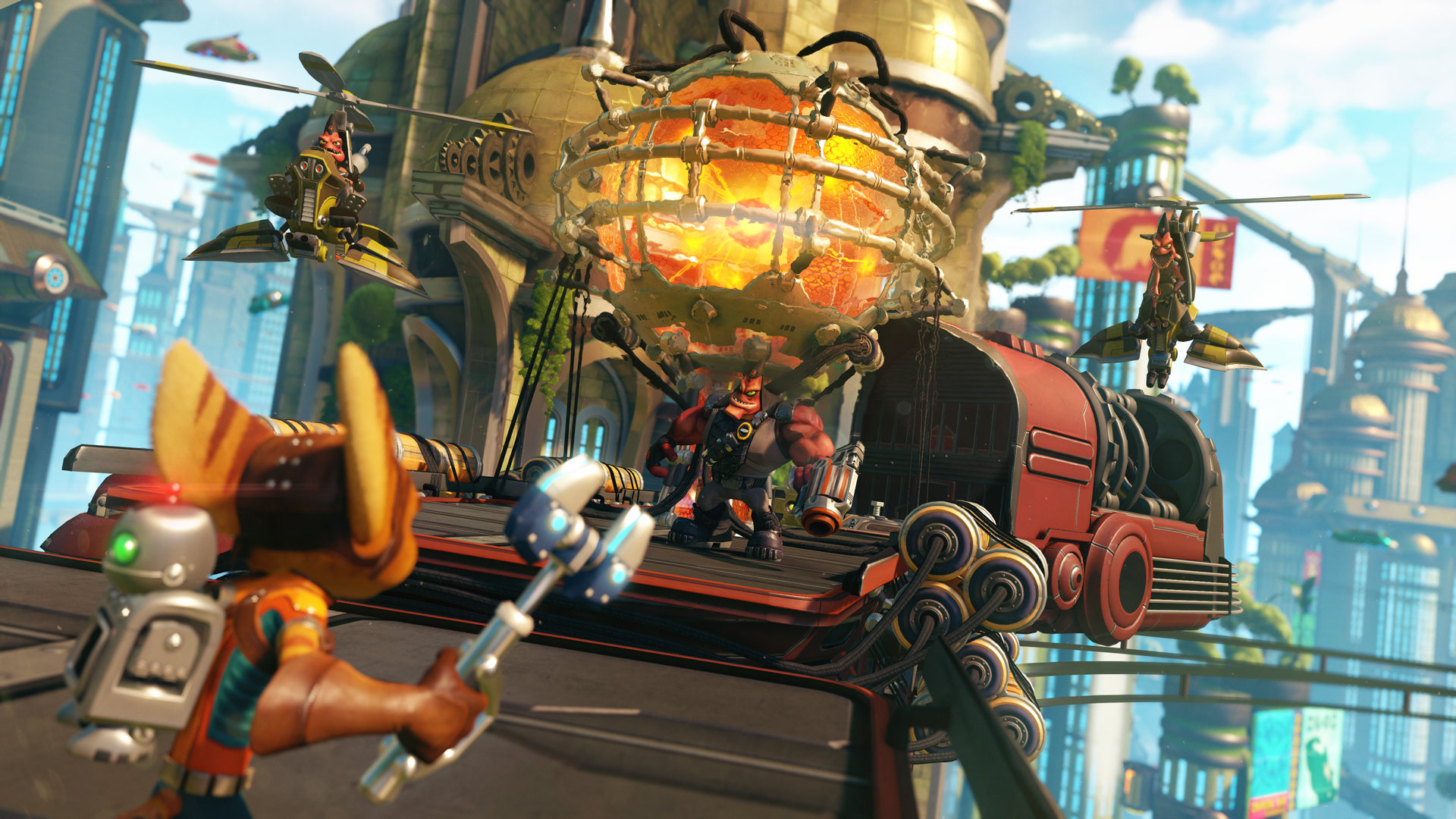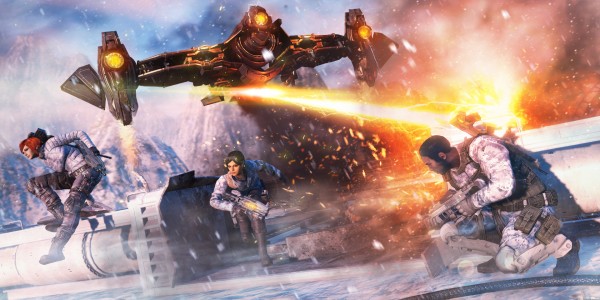
Fuse has come under a bit of fire ever since it was unveiled as the new form of Overstrike, a comedic spy-themed game first unveiled at E3 2011. The art style and tone of Fuse has since appeared to shift to become more realistic, gritty and violent. In our interview with Brian Allgeier, he explained the reasons behind this perceived change, and confirmed the game is now more Mission Impossible meets District 9 than the pure campy spy fun it was before. At EA’s recent Asia Pacific Showcase, I had the chance to go hands-on with Fuse to see for myself what Insomniac Games have cooked up this time.
The Overstrike team themselves haven’t been altered too much in the transition – Dalton Brooks, the team leader still looks grizzled and scarred, while Naya Devereaux is still slinky and deadly. There are four characters in total, and each has their own unique weapon, used in conjunction with regular firearms, as they stormed an enemy base in the demo. I played through this level in single-player, although it was clear to see how co-op would function with other players.
Dalton has access to the Magshield, a handgun that can create a giant energy barrier. This barrier moves through objects and people, and makes an excellent shield for your team to get behind when under heavy fire. Even cooler, it stops enemy gunfire mid-air, Matrix-style, and stores their kinetic energy to charge itself. You can then release this energy in a giant wall-size burst of energy which pushes forward, disintegrating everything in its path into a fine bloody mist. It’s definitely the coolest weapon I tried in the hands-on, but unfortunately there is a rather small energy bar for the gun, limiting the amount of time you can have the shield up and the number of bursts you can release. Hopefully, this is something that can be upgraded in the full release.
Jacob Kimble has the Arcshot Crossbow, essentially a Fuse-powered crossbow which shoots out energy capable of pinning bad guys to walls. He’s the best character to use for long-range attacks, which was a necessity in the hands-on demo, with many enemies sniping our heroes from the tops of buildings and other structures, meaning Kimble was really the only viable guy to use. In single-player, you can ‘leap’ from character to character (striving to put right what once went wrong) on the fly, as AI takes control of the character you left behind and you gain a different angle on the situation.
Naya is a powerful character for two reasons. One – she has a rifle which creates miniature black holes, which can be used to vaporise enemies, especially if you launch several at a time. Chaining black holes together increases their damage, resulting in larger areas of destruction. The other advantage Naya has is her cloaking ability, allowing you to perform stealth kills, as well as fairly easily sprint to cover on another side of the map and flank your enemies. Speaking of cover, there were a lot of waist-high cement blocks lying around the level, which your characters can jump behind for some stop-and-pop at the drop of a hat.
Isabelle Sinclair was the character I least used in the demo, although she still has a very interesting weapon. The mass bubble gun from the Overstrike trailer is gone, replaced by the ‘Shatter Gun’. This high-powered rifle fires chunks of material at enemies that slowly crystallises them. If you can hit them enough, they’ll eventually completely solidify so that they can be shattered by a hit from another weapon.
As you beat enemies and progress through the level, you collect the alien substance Fuse, which builds up a Fuse bar on-screen. Filling it up will unleash ‘Fusion’, a limited-time power-up which overpowers your characters, increasing their weapon damage, ammunition and seemingly their health as well. In the game proper, you’ll also be able to collect ‘Fuse Points’, which act as the game’s XP system, levelling up your characters in both the main storyline and ‘Echelon’ mode.
Echelon is Insomniac’s take on ‘co-petitive’ gaming. They claim it’s a fast-paced homage to games like Smash TV, as the players in the Overstrike team don’t defend against waves of enemies, they attack them, in order to get to their rewards first. In addition to Fuse Points up for grabs, there are also Fuse Credits, which appear as neon-lit bags of money on the fields of the game. Credits act as cash, used to upgrade team perks. This wasn’t a mode I had an opportunity to play during the hands-on, but it does sound like an interesting spin on the standard wave defense modes.
Overall, the demo was challenging, presenting waves upon waves of enemies for the Overstrike team to wipe out as they neared the entrance to an enemy hideout. However, as many people have noted upon seeing the game’s trailers, it did feel a little generic. There was a lot of hiding behind cover, getting shot by an enemy and awaiting a team-mate to heal you, just as the Gears of War formula has beaten into our heads. Right now, the best thing about the game are the cool weapons which can utterly destroy your enemies, but there wasn’t much evidence of the humour from Overstrike, only some dry lines here and there and in the database accessed through the menu. I’d imagine it’s a lot more fun with friends, and undoubtedly my playthrough only scratched the surface of what Fuse has to offer, so hopefully there are a lot more varied situations and objectives to complete in the full game, when it is released in March, 2013.

